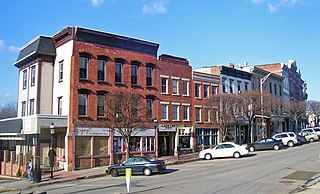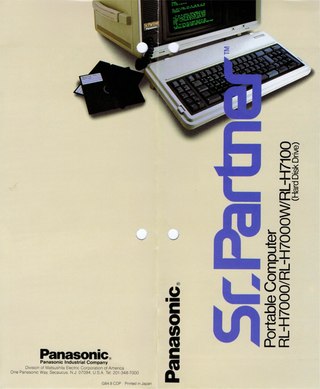
Westchester County is located in the U.S. state of New York. It is the seventh most populous county in the State of New York and the most populous north of New York City. According to the 2020 United States Census, the county had a population of 1,004,456, its highest decennial count ever and an increase of 55,344 (5.8%) from the 949,113 counted in 2010. Westchester covers an area of 450 square miles (1,200 km2), consisting of six cities, 19 towns, and 23 villages. Established in 1683, Westchester was named after the city of Chester, England. The county seat is the city of White Plains, while the most populous municipality in the county is the city of Yonkers, with 211,569 residents per the 2020 census. Westchester County are consistently ranked in the top 10 highest income counties and towns in the United States. The county is part of the Hudson Valley region of the state.

Ossining is a village in Westchester County, New York, United States. The population at the 2020 United States census was 27,551, an increase from 25,060 at the 2010 census. As a village, it is located in the town of Ossining.

The Journal News is a newspaper in New York State serving the New York counties of Westchester, Rockland, and Putnam, a region known as the Lower Hudson Valley. It is owned by Gannett.

Mamaroneck station is a commuter rail station on the Metro-North Railroad New Haven Line, located in Mamaroneck, New York.
There are forty-five local police agencies in Westchester County, New York. As well as other agencies. They are responsible for protecting Westchester County, these agencies frequently work with one another in the surrounding counties. Current economic times has caused a few Westchester municipalities to consider consolidation of police services. The Westchester County Department of Public Safety started providing primary police services for the Town/Village of Mount Kisco in 2015.

Millwood was a railroad station on the New York and Putnam Railroad in the hamlet of Millwood in New Castle, New York. It was located on Station Road just south of the southeast corner of the west end of the NY 120/133 overlap. Originally built by the New York and Putnam Railroad in 1881, this later became the Putnam Division of the New York Central Railroad. The original station house was built in 1888 but burnt to the ground soon after. The station was replaced in 1910 when the old Briarcliff Manor station was moved by flat car to the current location. The Putnam Line ended passenger service in 1958; the line was abandoned and now serves as the North County Trailway rail trail.

The Briarcliff Manor Public Library is the public library serving the village of Briarcliff Manor, New York, and is located on the edge of the Walter W. Law Memorial Park. The library is a founding member of the Westchester Library System. It is staffed by a director and eleven employees, including reference and youth librarians, and is governed by a ten-member board, with a liaison to the village board of trustees. The library offers computer classes, book discussion groups, young adult programs, a children's room and a local history collection. The library building also houses the Briarcliff Manor-Scarborough Historical Society, the Briarcliff Manor Recreation Department, and the William J. Vescio Community Center.

Blue Chip Electronics, Inc., later Blue Chip International, was an American computer company founded by John Rossi in 1982. Founded to develop peripherals for Commodore home computers, the company in 1986 began selling low-cost IBM PC compatibles.

The RoadRunner was an early laptop designed by MicroOffice Systems Technology and introduced in 1983. Weighing roughly 5 pounds (2.3 kg) and featuring a battery able to power it for up to eight hours, the RoadRunner was one of the first clamshell notebook computers ever released.

The Senior Partner is an IBM PC-compatible portable computer that was introduced by the Panasonic Corporation in 1984. Weighing roughly 31 pounds (14 kg) in its base configuration, the computer came equipped with a cathode-ray tube display and a built-in thermal printer.

Action Computer Enterprise, Inc. (ACE), was an American computer company that was active from 1978 to 1990. The company delivered one of the first multi-user-capable microcomputers, the Discovery 1600, in 1978.
Pronto Computers, Inc., was an American computer company based in Torrance, California, active from 1983 to 1987. During its brief existence, the company released a duo of IBM PC compatible computer systems and a family of high-spec graphics cards. Pronto's first product, the System 16, was widely lauded for its graphical prowess and industrial design; in 1983, I.D. magazine named it the best-designed product in the field of instrumentation and equipment. The System 16 was followed up with the Pronto Transportable Solution, a portable computer. Both it and the Pronto 16 ran the Intel 80186, a microprocessor seldom used in IBM PC compatibles. Pronto Computers went bankrupt shortly after the Black Monday financial crisis of 1987.

Informer Computer Terminals, Inc., originally Informer, Inc., and later Informer Computer Systems, Inc., was a privately held American computer company active from 1971 to 2007. It manufactured data terminals that could communicate with mainframes and minicomputers, mainly those manufactured by IBM and Digital. It was originally based in Los Angeles, California; in the early 1980s, it moved to Laguna Beach, and in the late 1980s, to Garden Grove.
3R Computers, Inc., or RRR Computers, Inc., later Avatar Technologies, was an American computer company based in Westborough, Massachusetts, known for their Avatar series of dumb terminal-to-workstation devices.
Athena Computer & Electronic Systems was an American computer company active from 1982 to 1987 and based in San Juan Capistrano, California. It released an early laptop, the Athena 1, in 1983. The laptop was one of the first to make use of solid-state technology as its primary storage medium.
The E'Lite is a small-form-factor microcomputer based on the Zilog Z80B microprocessor released by Barrington International Corporation in 1982. It served as the market introduction of Irwin Magnetic Systems' long-awaited 510 Winchester tape drives.
CompuSource Compatible Systems Inc. was a short-lived privately held American computer company active in the 1980s and based in Minneapolis. It sold a variety of clones of the Apple II, including one portable that was also an IBM PC clone and a CP/M machine.
Fortune Systems Corporation, later Tigera Group, Inc. and Connectivity Technologies, Inc., was an American computer hardware and software company active from 1980 to 2011. The company existed as a manufacturer of Unix workstations between 1980 and 1987 and are most well known for their Fortune 32:16 line of Motorola 68000-based workstations. Following years of financial turmoil and executive churn, the company left the computer industry after selling the majority of their hardware assets off in 1987, followed by their software assets in 1988.

Computer Transceiver Systems, Inc. (CTSI) was an American computer company active from 1968 to 1998. It manufactured a wide range of portable data terminals, portable computers, and printers for microcomputers under the Execuport name. It was originally based in Upper Saddle River, New Jersey, soon relocating to Paramus, New Jersey, where it spent most of its independent existence.
Lee Data Corporation was an American computer company based in Eden Prairie, Minnesota, and active as a hardware company from 1979 to 1990. It was principally founded by John M. Lee and John Roy to sell data terminal systems compatible with the IBM 3270. It found success going into the mid-1980s, with its offerings praised for their innovations and lower prices compared to IBM's 3270 line, but began faltering in the 1980s when IBM themselves began adopting such innovations.












